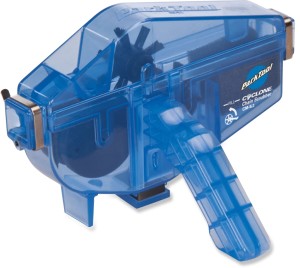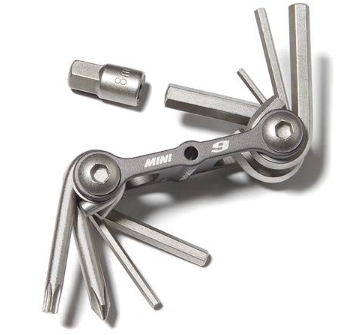 I’M PROBABLY THE LAST PERSON who should be writing about bicycle maintenance but, as an educator, I do know that studying a subject and then writing about it is a really good start to moving from good intentions to action.
I’M PROBABLY THE LAST PERSON who should be writing about bicycle maintenance but, as an educator, I do know that studying a subject and then writing about it is a really good start to moving from good intentions to action.
Now, my dad and mother instilled in me the understanding that “if you want something to last, you must take care of it.” So the old Schwinn 26-inch with balloon tires that my sister and I grew up with was washed and oiled regularly. However, I don’t think I can ever recall taking it to the bicycle shop for any reason.
I’ve always had a bicycle and am fascinated by how such an elegant mechanical device can give such joy and provide a great mode of transportation and freedom. If you haven’t been on a bicycle riding on the flat or whizzing down a hill lately, you may have forgotten the sheer joy of movement and balance a bicycle brings. It was the lack of such joy in climbing a hill or riding against a strong wind that moved me to explore the world of electric bicycles, and since my first electric of six years ago, I have not looked back. Now the joy is constant, whether downhill, uphill against the wind or with the wind.
My electric bicycle is my main form of transportation around Benicia and keeping it — or any bicycle — in tip-top shape is important.
Chains
 Since the chain is the work horse of the bicycle, it’s important to keep it clean and oiled, and to check whether it has stretched and may need replacement. Who knew that there is actually a little bicycle chain cleaning device you can buy?
Since the chain is the work horse of the bicycle, it’s important to keep it clean and oiled, and to check whether it has stretched and may need replacement. Who knew that there is actually a little bicycle chain cleaning device you can buy?
I am familiar with using an old rag to wipe a dirty chain. That usually completed the job for me — but it shouldn’t, because the next step is to apply a little solvent to loosen the dirt that can be cleaned up with a toothbrush and that old rag.
After you clean the chain, then you need to oil it. If the chain is loose and you can pull it away from the main crank, it’s time to consider a new chain, as a worn chain can cause problems with your bike.
Wheels
If you put your kickstand down so that you can spin your front or back wheel and it spins freely, then the alignment of your wheel is sound. But if you give it a spin and it comes to a stop, the axle might not be seated correctly, or your brakes might not be evenly spaced from the rim.
I had a situation with my first electric where there was a spacer placed in the back bracket where the axle fitted to the frame. When I changed a tire, I put the spacer in after placing the wheel on the bike frame, which caused the tire to slip and turn at an angle. When the tire slipped, I came to a screeching stop. Any misalignment makes the bicycle harder to pedal. (A habit I’ve gotten into over the years is to take a quick photo of how things looked before I took them apart.)
If your wheels spin correctly, it’s important to see whether the tread is worn and that the tire is inflated correctly. There seems to be a whole science on proper tire inflation and “tire drop.” I’ve put a link below for the details, but as a rule of thumb, you can look at the recommended inflation pressure range on the tire itself and pick a number halfway between the two as a start for proper inflation. After years of pumping a tire and gauging the pressure by feel, I finally broke down and got a pump with a gauge on it. I was pleasantly surprised to find out the pump didn’t cost that much at Greg Andrada’s shop, Wheels in Motion.
Brakes
I’ve had brakes fail me on a bicycle, and at that moment of failure it’s too late to be thinking about a simple maintenance check. Two important yet quick and simple checks to make prior to hopping on and riding: Look at the brake pads to see whether the rubber pads are worn or not, and make sure that when you pull on your brakes that they aren’t too loose. Brake pads aren’t that expensive, and they are quite easy to replace on your own. The brake cables should move easily in their cable sheaths.
When I was stationed in Thailand oh so many years ago, my bicycle lived outside my trailer. It was subject to torrential rains and my brake cables were constantly rusted and needed repairs because of the weather. My new bicycle has fancy hydraulic brakes that I really like a lot.
Loose nuts
 I may have mentioned this story by Sister Emile (my grade school principal). She would ask us, “Children, why is a classroom like an old car?” Naturally, we wouldn’t know, and Sister Emile would respond, “Because there is an old crank in the front and a lot of loose nuts in the back.”
I may have mentioned this story by Sister Emile (my grade school principal). She would ask us, “Children, why is a classroom like an old car?” Naturally, we wouldn’t know, and Sister Emile would respond, “Because there is an old crank in the front and a lot of loose nuts in the back.”
Well, bicycles tend to have loose nuts and screws that may need to be tightened up every now and again. Usually these have to do with baskets, lights, fenders, bicycle bells or horns, and they are easy to fix but a pain if they jiggle loose during a ride and need replacement. So give things a shake before a ride and if something is loose, tightening it up is a really good idea.
Soap and water
A little biodegradable soap and water to remove dust and dirt is a good way to keep your bicycle looking new. Be gentle with your bicycle — no pressure washers! — and think about washing your bicycle where some plants or bushes would benefit as well.
And, if you’re like me, taking my bicycle down to Wheels in Motion for a tuneup is always a smart thing to do.
Learn more
• Tire inflation: bikequarterly.com/images/TireDrop.pdf
• Bicycle maintenance checklist: bicyclehabitat.com/how-to/a-simple-bike-maintenance-chart-pg366.htm
• Benicia Bicycle Club: beniciabicycleclub.org
• Video from the August 2nd Bicycle Clinic: youtu.be/426k_Pc4_fo?list=PL4CEB0F984F43D37D
• Wheels in Motion: wheelsinmotionbenicia.com
Constance Beutel is the chair of Benicia’s Community Sustainability Commission. She is a university professor and videographer and holds a doctorate from the University of San Francisco.






Leave a Reply